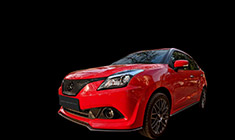News
The fashion league of Turbo-Petrol engines
While few people use their time and resources diligently to select and buy the right car as per their requirement, many buyers just follow that fashion league during car purchase.
Apex1815 recently shared this with other BHPians.
A brief introduction about myself: I work with an Automobile OEM (Earthmoving Machinery manufacturer) from almost a decade and my area of expertise is Vehicle Homologation, Regulations & Compliance. I often come across the queries related to cars and bikes from my friends / relatives and I try to answer them in a very layman language so that it is easier for them to understand the technical aspects of automobiles. At least, at home, I want to avoid the language of Technical Standards & Regulations for the vehicles.
Recently (from the past two to three years), the Indian car market has seen a lot of hype about turbo charged petrol engine cars over their naturally aspirated counter parts. Ever since the turbo-petrol engines have kicked in the Indian market, it has gained attention of a lot of potential car buyers (especially post launch of Hyundai Venue, i20 & KIA Sonet). Many car buyers aspire their set of wheels to be equipped with turbo-petrol engine (because that has become fashion), without even knowing their driving requirements and blindly follow the mob. Many of the car buyers who end up following the league of turbo-petrol often regret later about lesser fuel efficiency of a turbo-petrol engine car.
While few people use their time and resources diligently to select and buy the right car as per their requirement, many buyers just follow that fashion league during car purchase and prefer turbocharged petrol engine, large TV-type touchscreen on the dashboard, sunroof, engine On/Off Push button, etc.
I came across a lot of dilemma among few friends on Turbo waali Petrol gaadi and Naturally Aspirated Engine and thought of simplifying the same by quoting the example below so that even a person who just uses the car for simple office going can understand his requirement of the right engine.
Example:
Hyundai uses the 1.2 Litre Kappa Petrol Engine (Naturally Aspirated) in Grand i10. The same 1.2 Litre Naturally Aspirated engine is also used in i20 & Venue.
Now, it is already known to mankind since the inception of this planet that i20 and Venue are heavier than the Grand i10. Therefore the 1.2 litre petrol (which is used in Grand i10) does not perform in the same manner as it does on Grand i10. After reading such a statement, a not so enthusiast buyer will shift towards a Turbo Petrol Engine so as to maintain some status among his neighbours and peer group. You never know when the uncle ji in the neighbourhood will question the capability of a naturally aspirated 1.2 litre i20/Venue.
So keeping all such peer pressures apart, let us try to understand this in terms of power to weight figures below for a naturally aspirated engine (1.2 Litre Kappa Petrol of Hyundai) and decide whether it is a suitable engine for your next purchase.
The weight of the cars considered below is the average of kerb weight available on the internet as the actual weight of the variants is not available in the company’s brochure.

A simple look at the figures above indicate that i20 produces 10.5% lesser power and Venue produces 15.4% lesser power than Grand i10.
Further a look on the Kerb weight figures of the car will give some more insights about the feel factor of driving these cars:

Considering the kerb weight differences among Grand i10, i20 & Venue, following inferences are drawn to understand the driving feel factor of 1.2 Litre Kappa Petrol on i20 and Venue:
- i20 (solo) driving feel factor = Driver + Two slim people on board on Grand i10
- Venue (solo) driving feel factor = Driver + 3 slim people on board in Grand i10
If you drive a Hyundai Venue or i20 with 1.2 Litre naturally aspirated Petrol Engine you will not find a huge difference as compared to the Grand i10.
Verdict:
Potential candidates for naturally aspirated engine:
- A calm driver
- Majority (say 90%) of your driving miles are solo (or with small family i.e spouse and a kid)
- Drives mostly in city areas, rarely go on long drives (like once or twice a year)
Turbo Charged Engine potential candidates:
- A driver who always want to overtake the vehicles ahead
- Majority (say 90%) of your driving miles are with fully occupied vehicle
- Frequently goes on long drives
With more urbanized lives and nuclear families, most of the potential buyers will actually need the naturally aspirated engine.
Most of the times, the test drive of a car is for a very limited kms like 2~3 kms and it is not possible for everyone to judge the dynamics of the car with such a small test drive. So with this type of small brain storming, one can understand his requirement better.
Thanks to Apex1815 once again! Check out BHPian comments for more insights & information.










_2.jpg)

.jpg)





